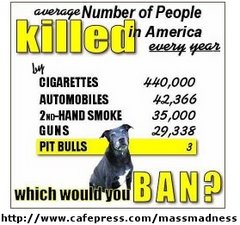Lab Gets New Attention in Pet Food Case
I can imagine the calls coming in just by the way the stores and animal hospitals are. I myself, when I saw the Hill's Prescription dry feline cat food contacted my vet to see if the food my sick cat, Petu was on could have been the reason he died. I was assured he was on the Hill's W/D formula which wasn't on the recall list and once they told me, it jarred my memory recalling they were right.
To lose him was stressful enough, but thinking he might have gotten better if not poisoned make me feel really terrible. Knowing that wasn't the case means we did everything possible to save him and I feel much better with that, but the panic that took over when I thought it a possibility, upset me to no end.
It wouldn't have brought Petu back, but suddenly I wanted to be compensated by the food company for not only the loss of my beloved pet, but all the expense I paid on medication that I was paying out for his illness. Now I can definitely relate to those who have lost their pets to the tainted foods. It's such a horrible feeling that just by feeding your pets (something you just take forgranted) is now such a frightening thing as more foods are being recalled.
The Animal Hospital that I take my fur-family to says they get so many calls daily regarding foods.
Lab Gets New Attention in Pet Food Case
By Mark Johnson
April 2, 2007 7:36AM
Scientists at the New York State Food Laboratory have long gone about their business with little fanfare, analyzing about 20,000 food samples a year in a facility that looks more like a high school chemistry lab than cutting edge workplace. The lab has been around for decades, but became part of FERN after the Sept. 11, 2001, terrorist attacks as part of the government's effort to protect the nation's animals and food supply.
Tucked away in a nondescript state office park, scientists at the New York State Food Laboratory have for years quietly gone about their business testing products destined for grocery store shelves.
The obscurity, however, ended abruptly last week as the lab, with 10 of its researchers on the case, made a crucial breakthrough in the testing of pet food believed to be responsible for animal deaths across the country. Using sophisticated drug screening panels, the lab determined a banned rodent poison called aminopterin might be killing the household pets.
The lab is part of Food Emergency Response Network, a federally supported group of state and federal facilities with expertise in testing food for chemical, biological, and radiological hazards. With a staff of about 40 chemists, microbiologists and technicians, the lab is one of a few dozen state-level facilities capable of doing such tests and regularly screens foods for pesticides.
Unable to pinpoint what was wrong with the pet food with their own equipment, scientists at Cornell University sent samples of the tainted pet food to Albany. Chemists there quickly got to work, three days before a nationwide recall of 95 pet food brands manufactured by Menu Foods of Ontario, Canada. Numerous tests eliminated hundreds of possibilities, from heavy metals to deadly fungus.
In a matter of days, the researchers zeroed in on aminopterin, a derivative of folic acid that was once used to induce abortions and is also used in cancer research. It can cause cancer and birth defects in humans and kidney damage in dogs and cats.
"We brought about 100 years of combined expertise to bear on this," said lab Director Daniel Rice. "Trouble shooting with each other was a real asset in this case."
Scientists there have long gone about their business with little fanfare, analyzing about 20,000 samples a year in a facility that looks more like a high school chemistry lab than cutting edge workplace. The lab has been around for decades, but became part of FERN after the Sept. 11, 2001, terrorist attacks as part of the government's effort to protect the nation's animals and food supply.
Now the lab's scientists have gotten more attention than they bargained for.
"It's been very stressful," said Virginia Greene, an associate food chemist. "We were triple checking our methodology. There are some skeptics and we have to fend them off. ... When you have a result like this, it starts casting more doubt than enthusiasm. It's bizarre how science works like that."






























2 comments:
It's horrible how much food has been contaminated. It begs the question as to how so much food could become contaminated without anyone at the respective factories knowing - but I don't know how dog food manufacturing goes. I hope that the people who lost pets to this get some sort of compensation.
I know some of the companies are paying out compensation, but don't know about all. It still doesn't dismiss that so many pets have died needlessly and before their times and that hurts the most.
It seems every day on the news you hear of new food and now treats that are tainted. You would have thought it would have stopped once they realized the first recall.
I watch my fur-kids very carefully even though they aren't on any that are on the list, but we shouldn't have to be in fear to feed our animals.
Post a Comment